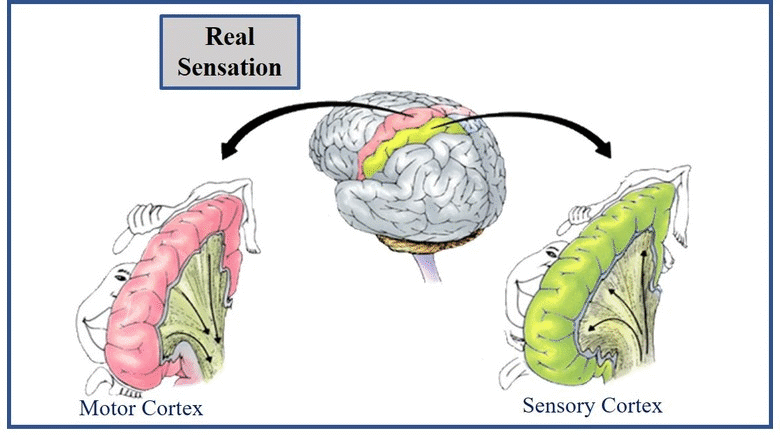
Objective: We propose a novel calibration strategy to facilitate the decoding of covert somatosensory attention by exploring the oscillatory dynamics induced by tactile sensation. Methods: It was hypothesized that the similarity of the oscillatory pattern between stimulation sensation (SS, real sensation) and somatosensory attentional orientation (SAO) provides a way to decode covert somatic attentional changes. Subjects were instructed to sense the tactile stimulation, which was applied to the left (SS-L) or the right (SS-R) wrist. The brain-computer interfacing (BCI) system was then calibrated with the sensation data and then applied for online SAO decoding, during which no stimulation was applied. The performance of SAO decoding with SS calibration was compared with SAO decoding with only SAO training data. Results: Both SS and SAO showed oscillatory activation concentrated on the contralateral somatosensory hemisphere. Offline analysis showed that the proposed calibration method led to higher accuracies than the traditional calibration method based only on SAO data. This was confirmed by online experiments, where the online decoding accuracy on 15 subjects was 78.8±13.1%, with 12 subjects >70% and 4 subjects >90%, exceptional for a two-class BCI based only on mental activities. Conclusion: By leveraging the similarity between the EEG oscillatory dynamics between the response to overt sensory stimulation and covert sensory imagination, the decoding accuracy of covert somatosensory attention such as SAO was significantly improved. Significance: Real tactile sensation is more consistent during calibration than SAO. Therefore, SS data can be used to provide higher SAO decoding accuracy than using SAO training data alone. This brain-computer interfacing based such calibration method may find application for stroke and completely locked-in patients with preserved somatic sensation.
The website of Waterloo Engineering Bionics Lab: https://uwaterloo.ca/engineering-bionics-lab/

